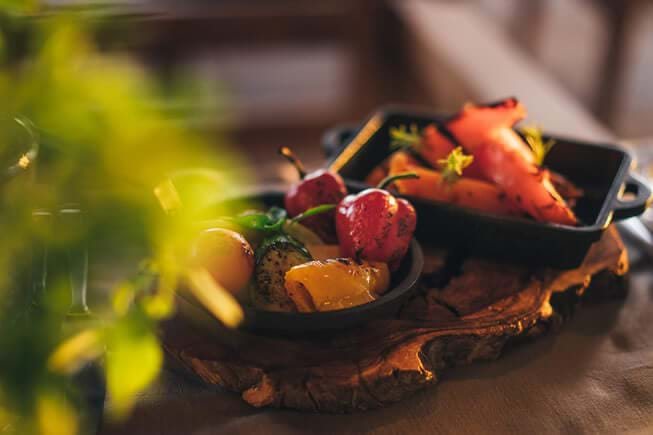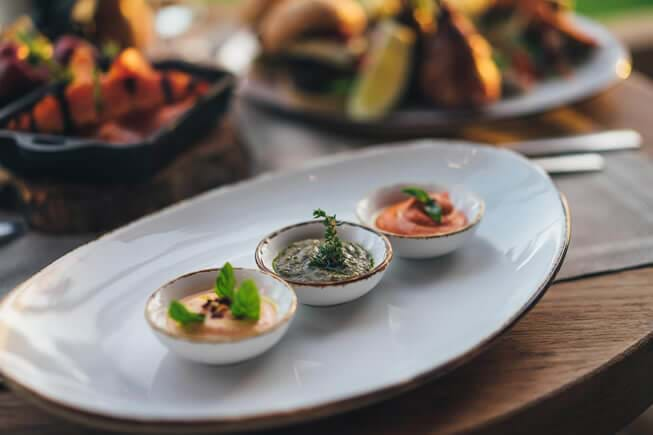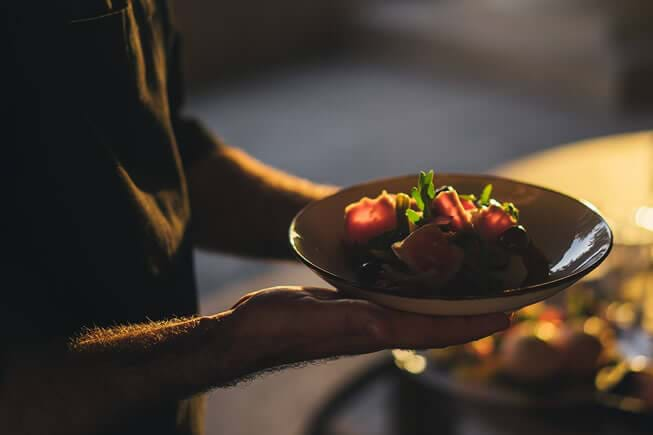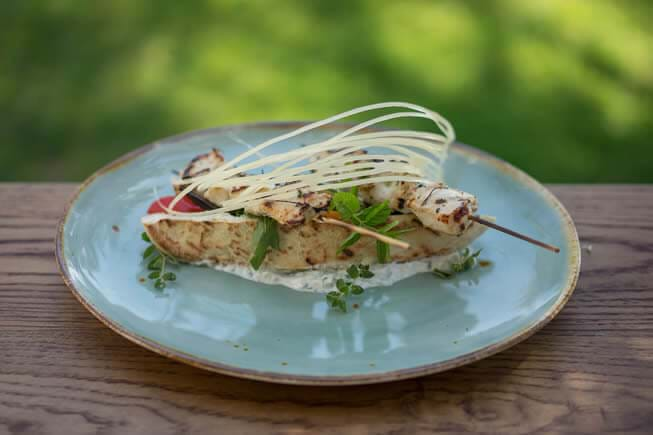The culinary traditions of Cyprus developed around what is available on the island. While fresh ingredients are essential, “the herbs create the taste,” says Marios Efstathiou, Annabelle’s sous chef. He uses fresh herbs, grown on the hotel’s grounds, and adjusts menus seasonally. At seaside taverna Mediterraneo, cooks follow traditional recipes but experiment with herbs to create outstanding flavourings. Vouttimata—a selection of Cypriot dips—is a case in point. The tzatziki is started by infusing fresh mint in cold milk; then garlic, cucumber juice, and yoghurt are blended in to create a smooth sauce. Moungra is made from cauliflower. After blanching the cauliflower, the cook creates a dough of flour, water, yeast, and mustard seeds; the mixture ferments and preserves the cauliflower. And Mediterraneo’s fava is made with black beluga lentils and seasoned with ground toasted cumin seeds and lemon. Seasonal dishes in July include a mint and basil pesto made with rocket and parsley. Courgette flowers are in season too; they are stuffed with feta, thyme, red pepper, olives, and parsley before being coated with bread crumbs and deep fried. Taverna meze is all about sharing—trying a wide variety of dishes and comparing notes. The chicken gyros allow diners to experiment with taste, too. Chicken is marinated in fresh herbs—thyme and oregano—along with white wine and olive oil and then grilled over charcoal. It is presented on the skewer, so diners can create their own flavourings by stuffing the pita with the vegetables and condiments of their choice.



